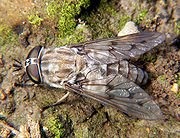1. Let us now return to our text.
I have suggested we should divide the first 16 glyphs into 8 + 8
glyphs (the same pattern as in the structure of G, where 8 * 29½ =
236 glyphs are followed by another 8 * 29½ glyphs).
 |
 |
 |
 |
 |
 |
 |
 |
|
Eb7-1 |
Eb7-2 |
Eb7-3
|
Eb7-4 |
Eb7-5 |
Eb7-6 |
Eb7-7 |
Eb7-8 |
|
'December' |
'January' |
'February' |
'March' |
 |
 |
 |
 |
 |
 |
 |
 |
|
Eb7-9 |
Eb7-10 |
Eb7-11
|
Eb7-12 |
Eb7-13 |
Eb7-14 |
Eb7-15
|
Eb7-16 |
|
'April' |
'May' |
'June' |
'July' |
The structure of the G text is built on measures
relating to Moon. This is one reason for expecting the 8 + 8 = 16
glyphs above to be meant as a description of the time when Moon rules (not the
season of grinning Spring Sun). The season of Waxing Moon could then
correspond (structurally) to Eb7-1--8 and the season of Waning Moon to Eb7-9--16.
Beyond Eb7-16 the takaure season (the 4th
phase of the 'butterfly') is evidently arriving:
 |
 |
 |
 |
 |
|
Eb7-17 |
Eb7-18 |
Eb7-19 |
Eb7-20 |
Eb7-21 |
 |
 |
 |
 |
 |
|
Eb7-25 |
Eb7-26 |
Eb7-27 |
Eb7-28 |
Eb7-29 |
I have rearranged the glyphs into what I
guess are 'statements'. These form a double pattern
of 5 + 3 = 8 glyphs, followed by yet another 3 glyphs. The
central glyphs carry most of the meanings.
For instance is vaha mea ('the red opening') in Eb7-27 a glyph type which
apparently was used to announce how the red light (mea) of the newborn Sun
is about to
'open up' (vaha) the year. In my Polynesian list of
words vahahora (where hora is summer) means 'spring',
i.e. vahahora = 'entrance to summer'. And vaha toga
means 'entrance to winter', i.e. 'autumn'.
2 * (5 + 3) + 3 = 19, and in Eb7-19 (the central glyph
between the pair of takaure) number 19 evidently is referring to
this sum. The takaure season stretches for 19 glyphs. In
Eb7-34 takaure is smaller than usual - he is on his way to
disappear. Significantly Metoro used the word takaure only at Eb7-18, Eb7-20, and
Eb7-34. I.e., he had presumably deduced something similar to what I
have here suggested.
Much more could be said about these 19 glyphs, but not
now. Instead: My conclusion here is that Eb7-1--16 must refer to the
time before the 4th quarter, before Sun is rising towards heaven
like a 'horse-fly':







